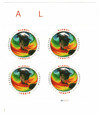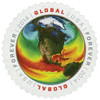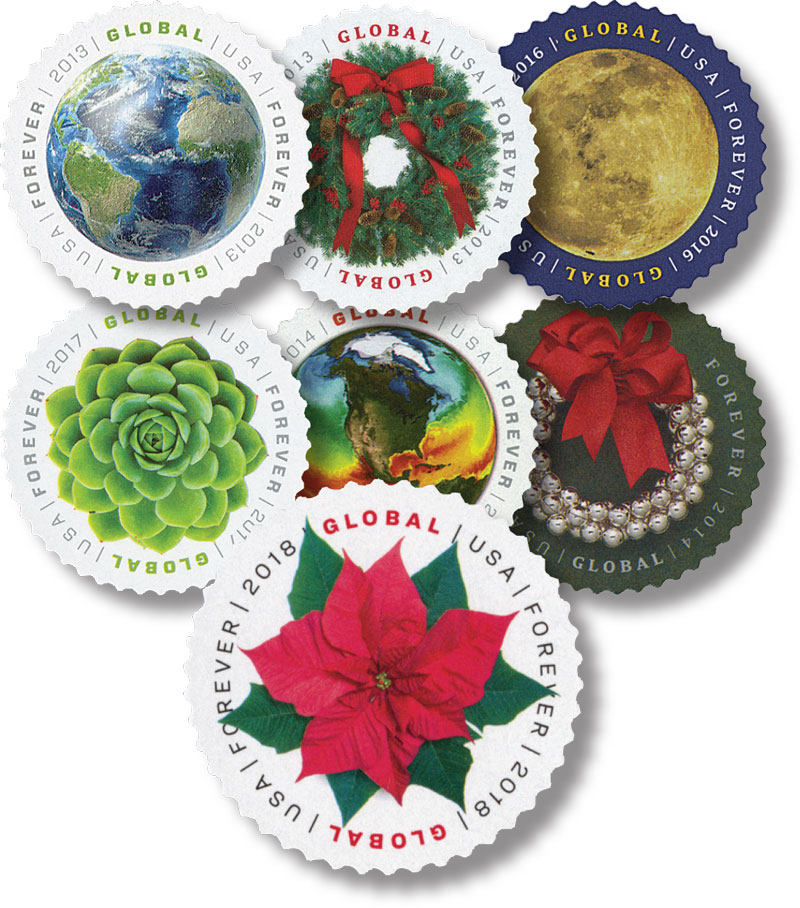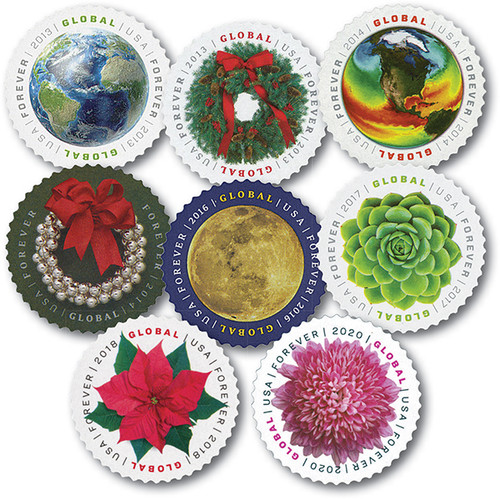
# 4893 - 2014 Global Forever Stamp - Sea Surface Temperatures
Global Forever Series
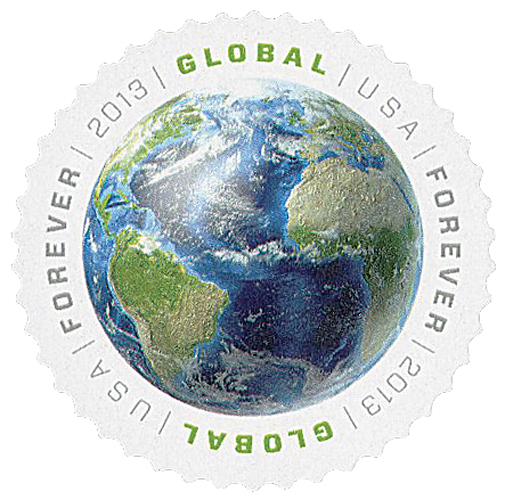
On January 28, 2013, the USPS issued the first stamp in its Global Forever Series. These stamps are used on international mail.
Up until the mid-to-late 1800s, mail sent to other countries was regulated by a number of different agreements that were binding only to signing members. Then in 1874, representatives from 22 nations met in Bern, Switzerland to discuss a better system, and to found the General Postal Union (later called the Universal Postal Union).
The Universal Postal Union revolutionized how mail was sent between countries. They decided that there should be a uniform rate to mail a letter anywhere in the world, that domestic and international mail should be treated equally, and that each country should keep all money collected for international postage. It also made sending international mail easier in another important way. Previously, people had to attach a stamp from each country their mail would pass through. This no longer was necessary. Participating countries also standardized postal rates and units of weight.
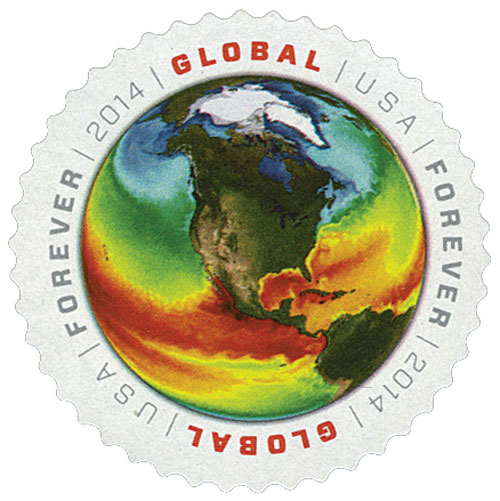
Another major development in the delivery of international mail came in 1920, with the establishment of international airmail. In the early years, airmail was flown between the US and Canada and Cuba. By late 1930, the US was delivering airmail to nearly every country in the Western Hemisphere. Service continued to expand to Europe and other parts of the world in the coming years.

In May 1977, airmail as a separate class of domestic mail ended when the USPS announced that First Class postage would provide the same or better service. And 30 years later, international airmail ended on May 14, 2007, though airmail stamps continued to be issued into 2012.
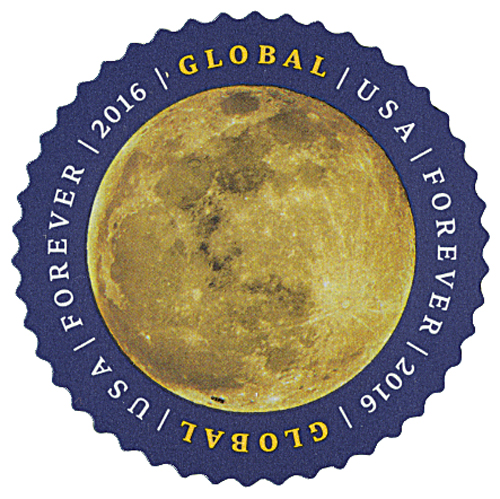
In October 2012, the USPS filed to change international mailing prices. Additionally, following the popularity of the domestic Forever stamps, first issued in 2007, they decided to start issuing Global Forever stamps. These new stamps would simplify international mail, by offering a single stamp for all international destinations.
Issued on January 28, 2013, the first Global Forever stamp had a face value of $1.10. The international rate stamp could be used on one-ounce letters sent overseas and two-ounce letters to Canada. Fittingly, this first stamp pictured a three-dimensional image of the Earth. The image was created by using satellite data and centers over the blue of the Atlantic Ocean, South America, and West Africa. To differentiate the classes of Forever stamps, the Global Series is a round stamp and has the word “GLOBAL” printed right on it. At least one Global Forever stamp has been issued every year since, except for 2015.
Global Forever Series

On January 28, 2013, the USPS issued the first stamp in its Global Forever Series. These stamps are used on international mail.
Up until the mid-to-late 1800s, mail sent to other countries was regulated by a number of different agreements that were binding only to signing members. Then in 1874, representatives from 22 nations met in Bern, Switzerland to discuss a better system, and to found the General Postal Union (later called the Universal Postal Union).
The Universal Postal Union revolutionized how mail was sent between countries. They decided that there should be a uniform rate to mail a letter anywhere in the world, that domestic and international mail should be treated equally, and that each country should keep all money collected for international postage. It also made sending international mail easier in another important way. Previously, people had to attach a stamp from each country their mail would pass through. This no longer was necessary. Participating countries also standardized postal rates and units of weight.

Another major development in the delivery of international mail came in 1920, with the establishment of international airmail. In the early years, airmail was flown between the US and Canada and Cuba. By late 1930, the US was delivering airmail to nearly every country in the Western Hemisphere. Service continued to expand to Europe and other parts of the world in the coming years.

In May 1977, airmail as a separate class of domestic mail ended when the USPS announced that First Class postage would provide the same or better service. And 30 years later, international airmail ended on May 14, 2007, though airmail stamps continued to be issued into 2012.

In October 2012, the USPS filed to change international mailing prices. Additionally, following the popularity of the domestic Forever stamps, first issued in 2007, they decided to start issuing Global Forever stamps. These new stamps would simplify international mail, by offering a single stamp for all international destinations.
Issued on January 28, 2013, the first Global Forever stamp had a face value of $1.10. The international rate stamp could be used on one-ounce letters sent overseas and two-ounce letters to Canada. Fittingly, this first stamp pictured a three-dimensional image of the Earth. The image was created by using satellite data and centers over the blue of the Atlantic Ocean, South America, and West Africa. To differentiate the classes of Forever stamps, the Global Series is a round stamp and has the word “GLOBAL” printed right on it. At least one Global Forever stamp has been issued every year since, except for 2015.






